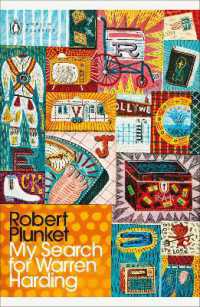- ホーム
- > 洋書
- > 英文書
- > Science / Mathematics
Full Description
Today's science museums descend from the Kunst-und Wunderkammern of the Renaissance-collectors' private cabinets of curiosities-through the Crystal Palace exhibition of 1851 to today's "interactive" exhibits promising educational fun. In this book, Michael John Gorman issues a provocative call for the transformation of science museums and science centers from institutions dedicated to the transmission of cultural capital to dynamic "idea colliders" that spark creative collaborations and connections. This new kind of science museum would not stage structured tableaux of science facts but would draw scientists into conversation with artists, designers, policymakers, and the public. Rather than insulating visitors from each other with apps and audio guides, the science museum would consider each visitor a resource, bringing questions, ideas, and experiences from a unique perspective.Gorman, founder of the trailblazing Science Gallery, describes three scenarios for science museums of the future-the Megamuseum Mall, "the Cirque de Soleil of the science museum world"; the Cloud Chamber, a local space for conversations and co-creation; and the invisible museum, digital device-driven informal science learning. He discusses hybrids that experiment with science and art and science galleries that engage with current research, encouraging connection, participation and surprise. Finally, he identifies ten key shifts in the evolution of science museums, including those from large to small, from interactive to participatory, from enclosed to porous, and from subject-specific to cross-disciplinary.







